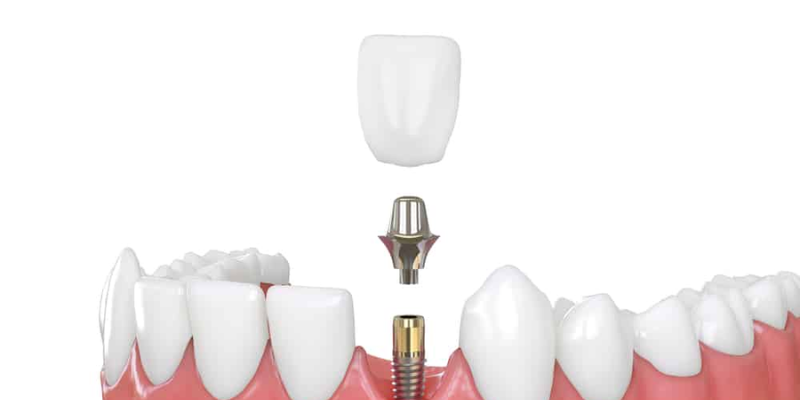Bone Graft for Dental Implant
Bone issues can be corrected with bone graft for dental implant procedure in cases of bone loss and deficiency in the jaw. People’s teeth are aligned on the jawbone within the mouth. Teeth can be lost for a variety of reasons. As a result, the jawbone, which houses the tooth roots, may deteriorate with time. Gum tissue difficulties can arise as the weakening structure loses bone. As a result, Bone Graft treatment can help you get rid of these issues.
Bone grafting is a treatment used to treat persons who are having implant procedures or who have difficulties with their jawbone. This surgery is commonly used to treat gum disorders as well as bone loss-related issues.
How Is bone graft for dental implant Treatment Performed?
As in treatment of bone dust, dentists frequently use autogenous bone grafts. This treatment of bone graft for dental implant entails extracting healthy tissues from the mouths of sick people and transplanting them to the affected location. There are no complications because the tissues extracted are the patient’s own tissue. When the jawbone levels needed for implant therapy is insufficient, autogenous bone graft is employed.
The procedure for a bone graft is performed under local sedation. Sedation may be used if necessary, based on the patient’s condition. If patients with chronic conditions can benefit from bone transplant treatment, the process will be tailored accordingly. Implant therapy can also be done on the same day if this process is applied to a limited region.
Swelling in the treated areas may occur just after bone graft procedure. You can treat these swellings and discomfort with a variety of prescription medications that your dentist will recommend. During the recuperation time, give special care to the grafted area’s cleanliness and sanitation. Otherwise, infection and other tooth issues may result. This treatment usually aids the patient in achieving the needed bone density within three months, allowing implant treatment to begin.
In bone graft for dental implant, expert dentists will evaluate you thoroughly for your oral and tooth health before beginning implant therapy. He or she will analyze the structure of your jawline and determine whether a bone graft treatment is required during this assessment. Following the examinations, he will devise a treatment plan for you based on the findings. He will explain this strategy to you, and the treatment process will begin in accordance of your wishes.
When is Bone Graft Treatment Applied in Implant Treatments?
You can replace teeth that have been lost for any cause with implant procedure. Bone graft for dental implant, the implant is screwed into the healthy jawline structure and a prosthetic tooth is attached to it. The jawbone, on the other hand, must be at a proper level and sturdy in order for this treatment to be completed. If you lost a tooth in the location where the implant will be placed a long time ago, the jawline in that area may have weakened and lost density.
Implant therapy is not possible on a jawline with these characteristics. You must boost your jawbone to suitable levels and strength in order to profit from implant treatment. You can restore your jawbone’s strength and levels using Bone Graft treatment. The treatment process may be delayed if a bone graft is required for implant treatment. However, if you require a bone graft for implant treatment, we strongly advise you to have this procedure performed. Otherwise, the implants you’ll use won’t be very strong.
Sinus Lifting in Bone Graft for Dental Implant
Besides the bone graft for dental implant, there is something also needed. The maxillary sinuses found on the inside of the face and behind the upper jaw’s rear teeth. Despite the fact that the sinuses are hollow structures, they are empty. These hollow structures can sometimes contain the roots of the upper posterior teeth. The narrow wall of the sinus might sometimes extend into the mouth if these teeth are pulled. Implant placement becomes impossible when the sinus barrier is extremely thin.
Sinus elevating surgery used to treat this problem. The sinus wall in the upper jaw pulls upwards, and bone grafts placed in the areas to be made. After a few months, the implanted bone fragments have merged with the jawbone and are ready for placement of dental implants.
In patients who have had a sinus lift, the implants are placed in that session if the height and quality of the prior existing bone allows it, but if a stable relationship cannot be created, the implants are produced at least a few weeks following the grafting procedure.
Increasing Border Width
Implant placement is challenging in circumstances when the bone height is adequate, but the width is insufficient. Grafts used to widen the bone in certain circumstances.
Nerve Relocation
To attain appropriate height for implant placement, the anterior nerve, which gives the sensation of contacting the lower lip and tip of the chin, must reposition from time to time. Despite the reality that it is a method that used on the lower jaw, it does when a molar or premolar tooth is missing and a dental implant used to replace it. Because this is a harsher surgery (it produces tingling in the lip and jaw tip, which heals slowly), other options are preferable.
On the outside side of the face and lower jaw, the artery and nerve canal first reveal. This area’s veins and nerves are isolated and removed one by one. Below the existing hole, a new location for the nerve created, and the nerve implanted there. As a result, it reduces. The original space filled with bone graft and the area closed, depending on the surgeon’s preference.
These treatments have done under localized or general anesthesia, depending on the patient’s needs. A recovery and relaxation period of roughly a week may require after that.
How Much Does a Bone Graft for Dental Implant Costs?
For bone graft for dental implant, bone transplantation the cost determined by the size of the section that grafted. On the other hand, prices for a missing tooth location normally range from. Implant therapies may not be covered by your insurance. However, some bone graft treatments covered by insurance. Your insurer will cover the cost of the bone graft in this way.
Why Choose Clinica, Hair Transplant Turkey?
Clinica Hair Transplant Turkey is the perfect choice for anyone looking for a safe, reliable, and proven hair transplant service. Founded in 2017 in Antalya, Clinica has quickly become one of the most sought-after names in the industry, offering an array of treatments to meet all types of needs. This includes FUE Method and DHI hair transplant techniques, as well as non-surgical treatments like PRP and mesotherapy. Clinica also offers services like rhinoplasty, dental, teeth whitening, and cosmetics, including surgical and/or non-invasive procedures.

Moreover, their team consists of highly experienced and qualified surgeons who specialize in hair restoration procedures. All Clinica services are tailored to provide excellent results with minimal downtime and natural-looking outcomes. With its state-of-the-art facilities and high dedication to client safety and satisfaction, Clinica continues to be an industry leader for those looking for quality hair restoration solutions. It is no wonder that Clinica’s name is becoming synonymous with successful hair transplants worldwide.
If you’re thinking about getting a hair transplant, look no further than Clinica Hair Transplant Turkey! Contact Clinica hair transplant Turkey today to book a free consultation and meet an expert in the field.





